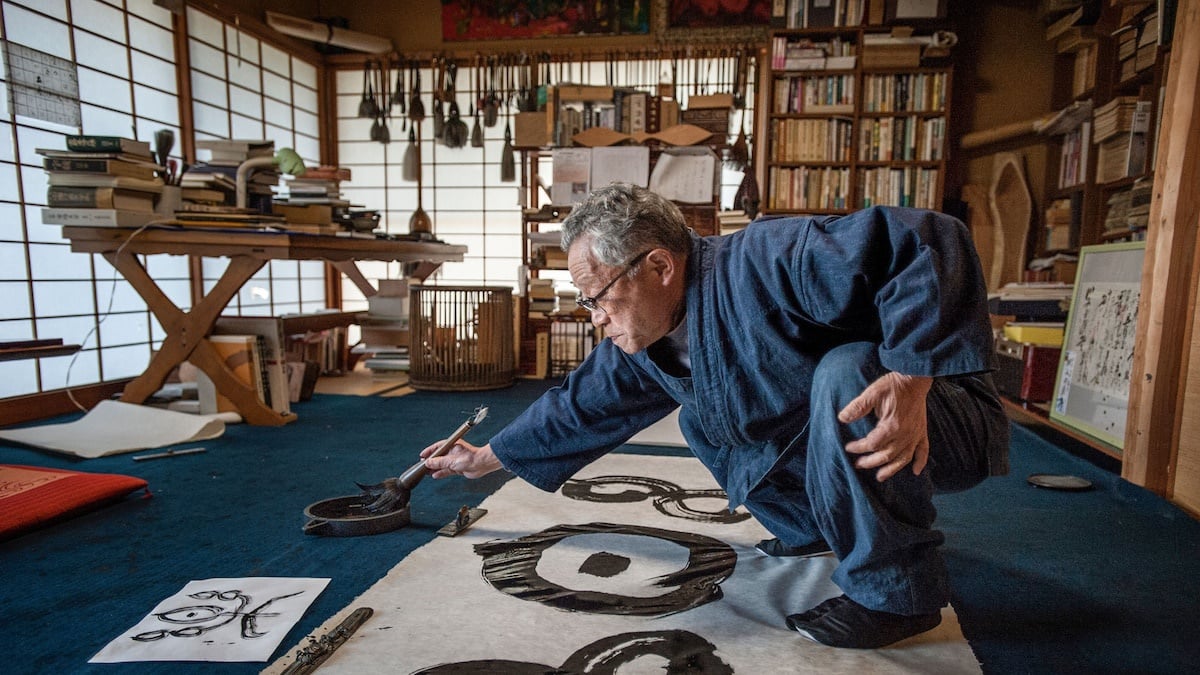THE SOUL OF THE GIANT LANTERNS
Many people know washi paper as an indispensable part of making Japanese lanterns. In the summer, Aomori City sees the "giant warriors" parading through the streets. These giant lanterns of many shapes are the centerpiece of the Nebuta Matsuri festival with a history of nearly 300 years. The festival takes place in the evening, lasting for a week in August and is one of the biggest seasonal events in the land of cherry blossoms.
It takes locals months to design and produce the lanterns. Hiroo Takenami, a craftsman, said the outer layer of the “giant warriors” is made fromwashi- traditional handmade paper made from mulberry branches.

Giant lanterns at the Nebuta Matsuri festival.
According to Mr. Takenami, the outer layer of the modern lantern is not exactly the original traditional washi paper, although there are similarities: "We encountered heavy rains during the parade, and the rain ruined the traditional paper covering the lantern. So we had to produce a paper that included synthetic fibers to increase its water resistance."
Such adjustments were necessary as the country continued to maintain its traditional festival practices. While machine-made paper has largely replaced the original handmade washi across the land of the rising sun, in some towns artisans still maintain the tradition of hand-made papermaking.
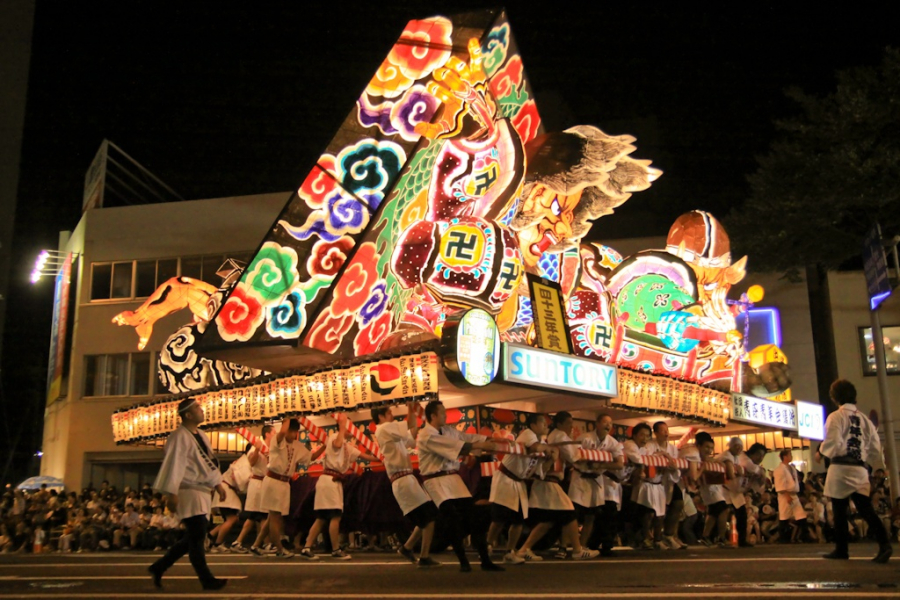
The outer layer of the modern lantern is not the traditional original washi.
originated from the paper used to write scriptures
According to the Nihon Shoki series - one of the oldest books in Japanese history, paper was introduced by Korean monks in the early 600s AD. At that time, washi paper was used to write scriptures when Buddhism began to be introduced and accepted throughout Japan.
Over time, the method of using stronger plant fibers such as mulberry bark developed. The paper’s strength improved dramatically, allowing this hand-made method to become more widely used throughout Japan. The strong and absorbent texture made washi ideal for calligraphy and ink works.

Washi is the ideal paper for calligraphy.
In addition, thanks to its good light filtering ability and the firmness of the interwoven fibers, washi is also used as paper screens for doors, curtains, lanterns, etc. Not only is it multi-purpose, this type of paper is also very environmentally friendly. Unlike industrially produced products, the raw materials for washi only use newly removed tree branches, so the entire tree does not have to be cut down. The washi production process also does not use chemicals and the paper is biodegradable.

Washi is also used as paper screens on doors and windows.
However, during the Meiji period (1868-1912), when Japan underwent a period of Westernization, with the appearance of paper made of paper and able to be mass-produced, washi began to take a step back, with its role moving from everyday use to more artistic and traditional purposes.
It takes decades to become an artisan.
One of the oldest washi-making locations in Japan is the city of Mino, which has been a merchant town since the Edo period (1603-1868). Lanterns are made by everyone from students, amateurs, and skilled craftsmen in Mino using washi.
Takeshi Kano is one of eight renowned artisans in Mino who have the skills to produce hand-made washi paper in its most original and traditional form (only 10% of all paper in Mino meets this standard). To be recognized, the artisan must undergo at least 10 years of training as a member of the Honminoshi Paper Preservation Association.
"It is important to train the next generation of paper artisans and pass on the knowledge of the craft. We can both preserve the craft and maintain financial efficiency," said Mr. Takeshi Kano.

Takeshi Kano - one of the 8 famous handmade washi paper artisans in Mino.
Original washi paper must be made entirely by hand...
Sharing about the process of making washi paper (honminoshi), artisan Takeshi said: "Standard Mino washi paper must be made entirely by hand, using only three ingredients: mulberry branches, water and mucus to increase the uniformity of the plant fibers when dispersed on the paper."
Essentially a manual process passed down through the artisans for centuries, they first steam mulberry branches until they are soft enough to peel off the bark. The insides are washed with river or stream water, then dried in the sun to naturally bleach them.
The papermakers then boil the bleached bark and soak it in cold water, carefully removing dirt and dust. They soften the bark fibers by beating them by hand and then mix them in vats with water and neri to create pulp.
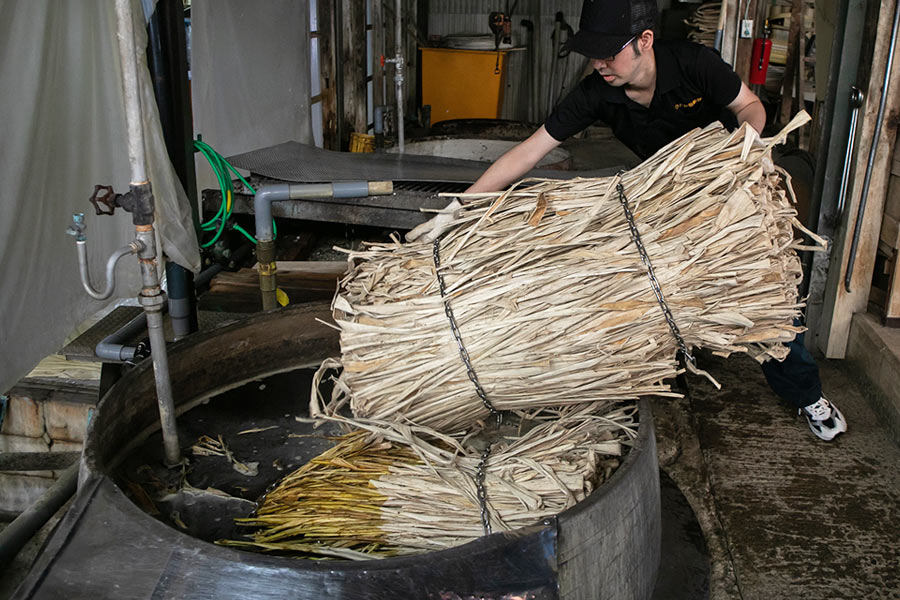
Silkworm sap is one of the main ingredients that make up washi paper.
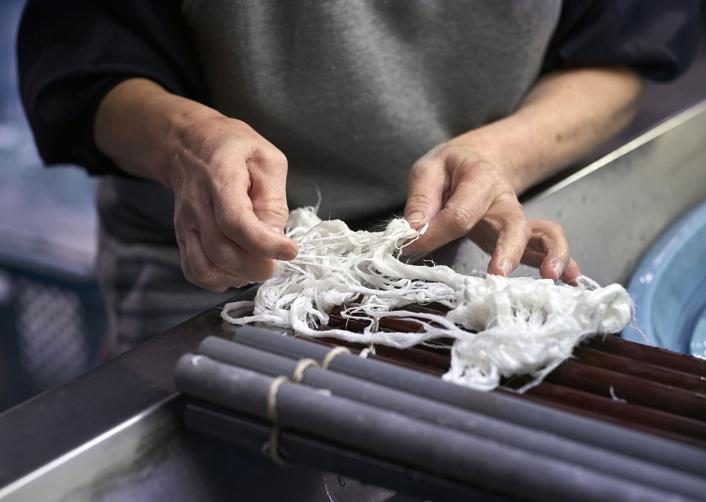
Washi paper is peeled off after steaming.
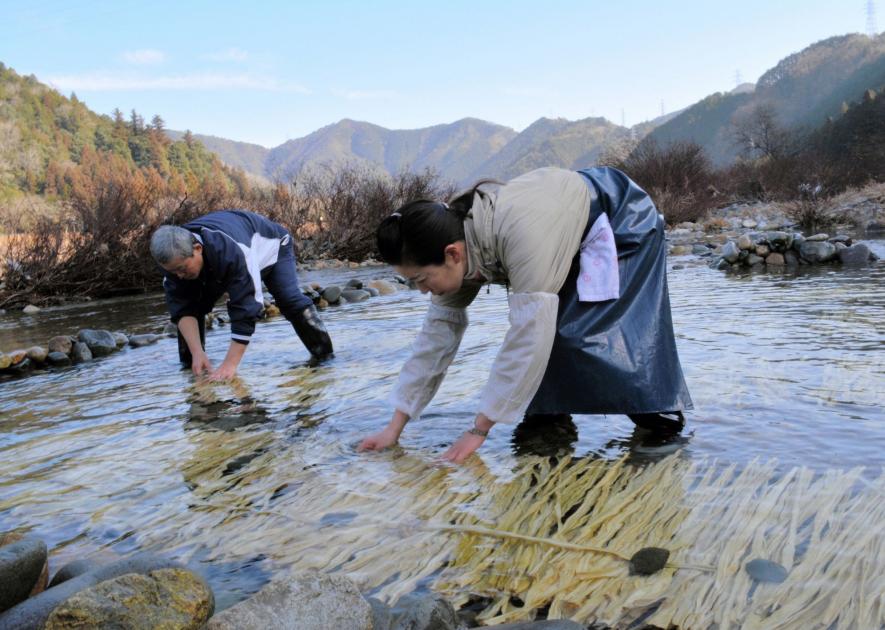
Then rinse with river or stream water.
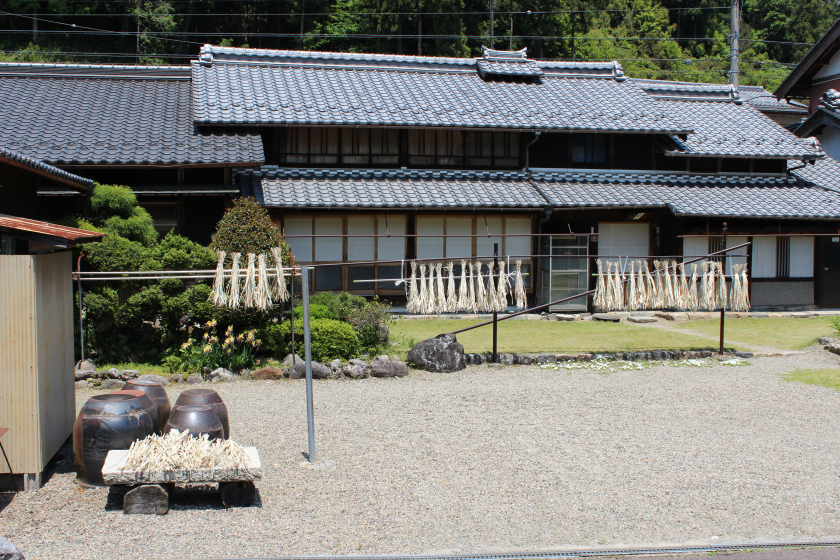
The raw materials are exposed to sunlight for natural bleaching.
A wooden frame with hinges is used to form sheets of paper when dipped in cold water. The resulting sheets are pressed overnight and left to dry on boards. It takes several weeks for the pulp to turn into paper.

The paper plates are "shaped" with wooden frames.
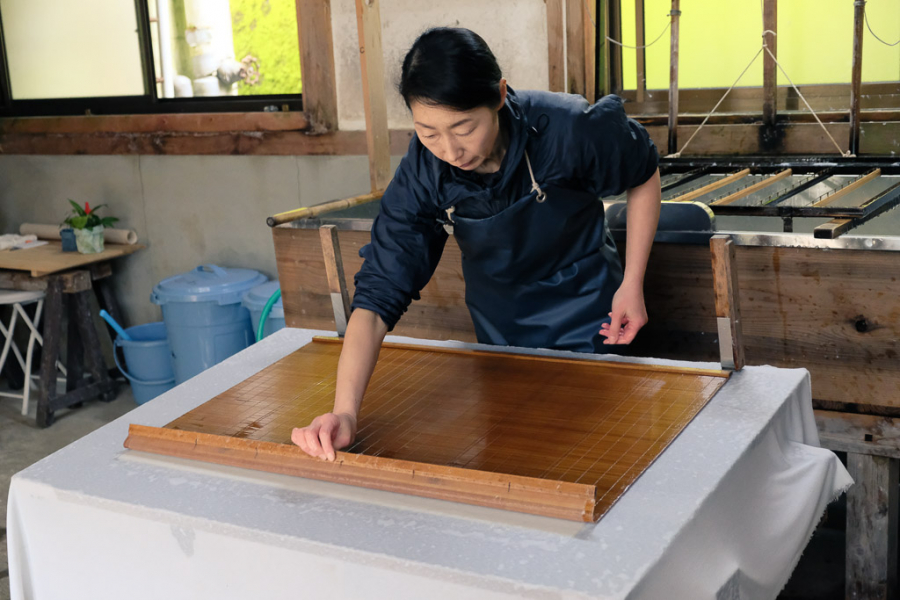
It is then pressed overnight, and left to dry on boards for several weeks.
In 2014, the special washi paper-making tradition (honminoshi) in Mino City was recognized by UNESCO as an Intangible Cultural Heritage. Sekishubanshi (Hamada City) and hosokawa (Ogawa City) were also recognized with this title. "People living in this community are proud of their washi paper-making tradition and consider it a symbol of their hometown's cultural identity," said a UNESCO representative.
cultural values that last over time
Visitors to Mino City, the capital of washi paper, can easily explore the proud culture of the Japanese people from contemporary craft shops, displaying traditional items made from washi such as: clothes, bags, paper umbrellas, interior decorations, postcards... Last year, textile manufacturer Takebe even launched a reusable mask made from washi paper.

Business cards printed on washi paper.

Eco friendly washi bags.
Tourists can visit paper factories or some historical buildings to participate in making washi dolls and traditional handicrafts. In addition, there are some tours that offer experiences of visiting mulberry plantations, craft workshops, factories and workshops for tourists to make washi paper by themselves...
In rural Japan, there is the famous Echizen Washi Paper Village, where there are more than 60 washi factories, including handmade paper establishments. Here, visitors can visit the Udatsu Paper & Crafts Museum, where artisans will teach visitors how to make washi and sell many types of handmade paper famous throughout Japan.
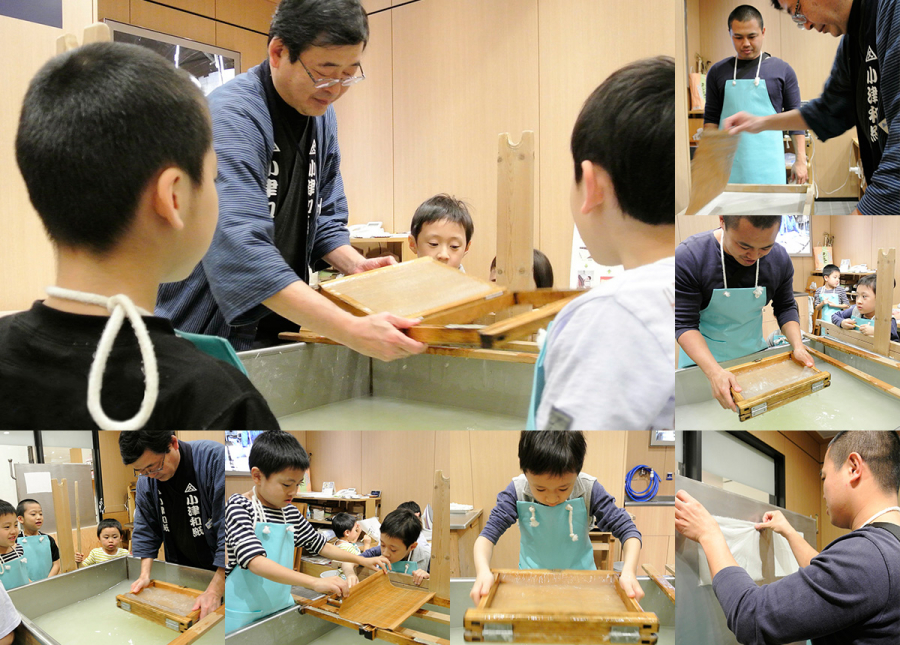
Visitors experience making traditional washi paper.
With the development of a modern industrial country like Japan, the original traditional washi paper has been replaced by other types of paper with more economical production costs. Although it is not the only type of handmade paper in this country, washi still has a strong position because of its cultural value and environmental friendliness.






